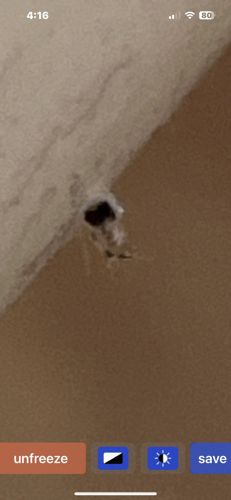Common House Spider
Scientific Name: Parasteatoda tepidariorum (formerly Achaearanea tepidariorum)
Order & Family: Araneae (Order), Theridiidae (Family)
Size: 3-7 mm for females, 3-5 mm for males (body length, excluding legs)

Natural Habitat
Commonly found indoors in human dwellings, especially in corners, basements, attics, and cluttered areas. Also found outdoors in undisturbed places like eaves, sheds, and under rocks.
Diet & Feeding
Strictly carnivorous, feeding on insects and other small invertebrates caught in their webs or ambushed.
Behavior Patterns
Spiders build webs to catch their prey, although some species are active hunters. Most are nocturnal. They undergo molting as they grow. Reproduction involves the male transferring sperm to the female, often followed by the female laying eggs in a silk sac.
Risks & Benefits
Generally harmless to humans; their venom is not medically significant. They provide a beneficial service by consuming nuisance insects like flies, mosquitoes, and other pests. Rarely bite unless provoked.
Identified on: 9/2/2025